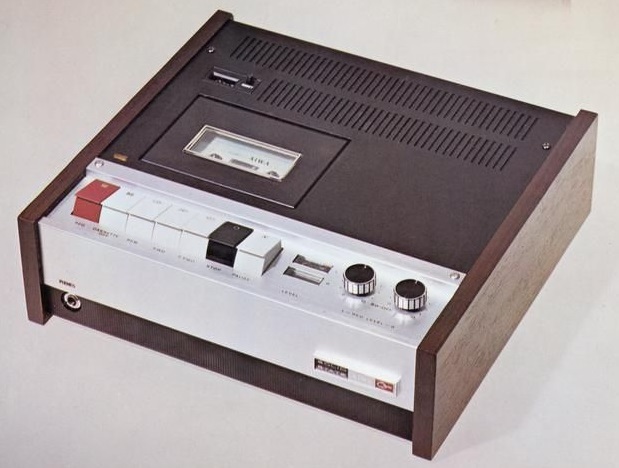
However, it was a large cassette (5 × 7 in, or 13 × 18 cm), and offered few pre-recorded tapes. In 1958, following four years of development, RCA Victor introduced the stereo, quarter-inch, reversible, reel-to-reel RCA tape cartridge. These instruments were very expensive and relatively difficult to use and were therefore used mostly by professionals in radio stations and recording studios. It was based on the invention of the magnetic tape (1928) by Fritz Pfleumer, which used similar technology but with open reels (for which the tape was manufactured by BASF). In 1935, decades before the introduction of the Compact Cassette, AEG released the first reel-to-reel tape recorder (in German: Tonbandgerät), with the commercial name "Magnetophon". One of the first (portable) cassette recorders from Philips, the Typ EL 3302 (1968). This reversal is achieved either by flipping the cassette, or by the reversal of tape movement ("auto-reverse") when the mechanism detects that the tape has come to an end. Two stereo pairs of tracks (four total) or two monaural audio tracks are available on the tape one stereo pair or one monophonic track is played or recorded when the tape is moving in one direction and the second (pair) when moving in the other direction. The tape itself was commonly referred to as "eighth-inch" tape, supposedly 1⁄8 inches wide, but it was slightly larger: 0.15 inches (3.81 mm). These spools and their attendant parts are held inside a protective plastic shell which is 4 by 2.5 by 0.5 inches (10 cm × 6.3 cm × 1.3 cm) at its largest dimensions. Compact Cassettes contain two miniature spools, between which the magnetically coated, polyester-type plastic film (magnetic tape) is passed and wound. Between the early 1970s and the early 2000s, the cassette was one of the two most common formats for prerecorded music, first alongside the LP record and later the compact disc (CD). The first cassette player (although mono) designed for use in car dashboards was introduced in 1968.
#1964 SONY REAL TO REAL TAPEDECK PORTABLE#
Its uses ranged from portable audio to home recording to data storage for early microcomputers.

The compact cassette technology was originally designed for dictation machines, but improvements in fidelity led the Compact Cassette to supplant the Stereo 8-track cartridge and reel-to-reel tape recording in most non-professional applications. Compact cassettes come in two forms, either already containing content as a prerecorded cassette, or as a fully recordable "blank" cassette. It was developed by Philips in Hasselt, Belgium, and released in 1962. The Compact Audio Cassette (CAC) or Musicassette (MC), also commonly called the cassette tape or simply tape or cassette, is an analog magnetic tape recording format for audio recording and playback.


 0 kommentar(er)
0 kommentar(er)
